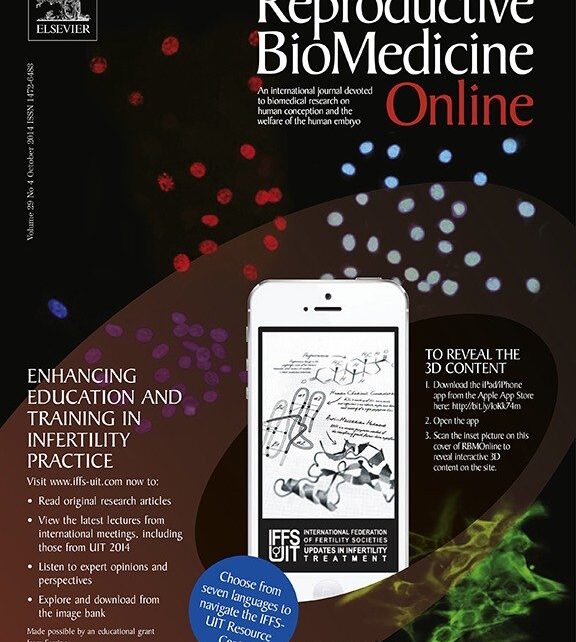New scientific publication on ovarian reserve in Reproductive Biomedicine Online (RBM Online)
October, 13th 2014

In this issue, the prestigious international journal Reproductive Biomedicine Online (Online RBM) has published the latest Instituto Bernabeu research work.
This research work titled “ANDROGEN RECEPTOR CAG REPEAT LENGTH IS ASSOCIATED WITH OVARIAN RESERVE BUT NOT WITH OVARIAN RESPONSE” is a clear example of the desire of our medical team for customized the treatment of each couple who come to our clinic seeking solutions for their fertility problem.
In assisted reproduction treatments, ovarian stimulation is key to the success of the treatment. In most cases ovarian response is adequate, however for 9-24% of cases of ovarian response is insufficient. These patients are called poor responders. There have been proposed several predictive markers of ovarian stimulation such as: age, ovarian reserve, hormonal status and smoking. But in addition to those parameters, the genetic variability could be an important factor. Therefore, the diagnosis and treatment to be performed to these patients should be multidisciplinary.
Recently, we are developing new ovarian stimulation protocols based on the use of androgens to improve ovarian response in poor responder patients. Androgen action is mediated by its receptor, the androgen receptor (AR). A variant (CAG polymorphism in exon 1) in said gene which modulates its activity and thus its effect. In this research work we have studied the ovarian response and ovarian reserve based on that variant. Work results have shown that this variant is associated with ovarian reserve but not with the ovarian response.
This finding helps to explain what could be the mechanism of action of androgens in women and its importance in ovarian stimulation protocols, as their action would be producing in upstream with increased recruitment of precursor’s follicles that formed the basis for ovarian stimulation. The polymorphism of the AR gene may play an important role in ovarian aging process and might therefore be one factor that may determine the ovarian reserve.
This research is the result of a joint effort of different professionals (gynaecologists, embryologists, geneticists) that are part of Instituto Bernabeu Poor Response Unit that can treat each patient individually to offer the best results.
See section on scientific releases
